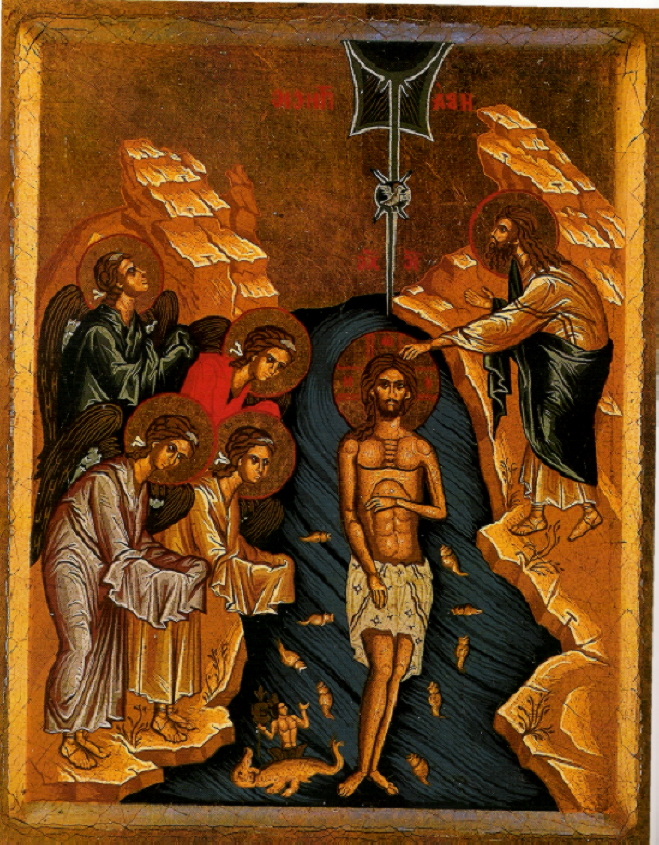I am reading Peter Schäfer’s creative reconstruction of the background for Jesus in the Talmud and a thought occurred to me that I do not see how I missed before (and a connection Schäfer does not seem to make). The Talmud addresses Jesus’ lineage (b Shab 104b), asserting that he is a bastard, a mamzer in the Hebrew. The biblical legal issues surrounding a mamzer go back to Deut. 23.
Deut. 23:2 Those born of an illicit union shall not be admitted to the assembly of the LORD. Even to the tenth generation, none of their descendants shall be admitted to the assembly of the LORD.
So even “to the tenth generation” a mamzer shall not be admitted into the assembly of the LORD. The very next verse addresses another community that is excluded from fellowship, Ammonites and Moabites.
Deut. 23:3 No Ammonite or Moabite shall be admitted to the assembly of the LORD. Even to the tenth generation, none of their descendants shall be admitted to the assembly of the LORD….
I am sure others have noted this and a quick check of commentaries on Matthew would show their work, but while we know Ruth is included in Matthew’s genealogy due to Jesus’ Davidic lineage perhaps there is another, more subtle messaging at work as well.
It seems likely that many would have noted and questioned Mary’s pregnancy or, if we want to be minimalist about it, questioned Jesus’ parentage. The accusation of mamzer is convenient and I would guess Jesus was not the only one at whom it was leveled. It is difficult to prove one’s paternal lineage (hence the transition to maternal lineage in Judaism, you usually know who the mother is) and yet the consequences were great. If you were a mamzer you had no (or limited) rights in the congregation of Israel. As Schäfer points out,
…the Talmud concocts its drastic counter narrative of the adulteress and her bastard son (presumably from a Roman soldier), demonstrating the complete absurdity of any Davidic (and hence Messianic) claim. As a bastard, Jesus belongs to the community of Israel only in a limited sense. [mfn]Schäfer, Peter, Jesus in the Talmud, (Princeton University Press, 2007), p. 98.[/mfn]
Yet…consider again Deut. 23:3. Ruth was a Moabite. She should not have been allowed to marry Boaz and therefore King David’s own standing as an Israelite should be illegitimate: “even to the tenth generation, none of their descendants shall be admitted to the assembly of the LORD.” Yet, as the Midrashim and Targumim tell us, Boaz learned from the Sages that the ruling only applied to the men.
“It has surely been told to me concerning the word of the sages that, when the Lord decreed concerning them, he did not decree against any but the men.” Tg. Ruth 2:11
While that ruling only applied to the men, thus allowing Boaz to marry Ruth, it also meant that their great grandson David was acceptable and rightly a member of the assembly of Israel.
The reference to Ruth in Matthew’s genealogy not only brings out the Davidic lineage (and I recognize that the discussion of why the four women are included in the lineage is complex), but also responds to those who might accuse Jesus of being a mamzer and, by the law of Deut. 23:2, be considered invalid as an Israelite. If the law was waived in Deut. 23:3 for Ruth due to her faithfulness, [mfn]I should note that the Book of Ruth never addresses the apparent conflict with Deuteronomy. It is left to later exegetes to wrestle with that issue.[/mfn] why not the law of 23:2 for the Messiah? Perhaps this is a preemptive apologetic, as it were.
As I said, others have probably already noted this and there is a rich corpus of academic literature on the reasons why Tamar, Rahab, Bathsheba, and Ruth are included in Matthew’s genealogy. I think there may well be more to it than simply “their inclusion in the Messiah’s genealogy reminded the Jewish and the Gentile readers of the Gospel that God’s great plan of salvation included Gentiles, even unrighteous Gentiles.” [mfn]Hare, Douglas R. A., Matthew, (Louisville, Ky: Westminster John Knox Press, 2009), p. 6.[/mfn]
But maybe not. Ruth was a Moabite and Jesus was (from a human perspective) a mamzer. So what?






3 thoughts on “Jesus, the Mamzer, and Ruth”
Prohibition of Moabites pertains only to the males; thus, Ruth was legit!
: )
Oops, i see you’ve mentioned that!
To be clear, the exception for Moabite women was not a biblical exemption. It was later rabbinic solution to the problem of Boaz marrying a Moabite.
In fact, that is the very tension of the story. We are repeatedly told that she is a “Moabitess.” Implied is, “How can he marry her?” A different solution, also implied in the rabbinic sources, is that Ruth’s commitment to Naomi in chapter 2 serves as sufficient indication for Ruth’s acceptance into Israel *before* her marriage.